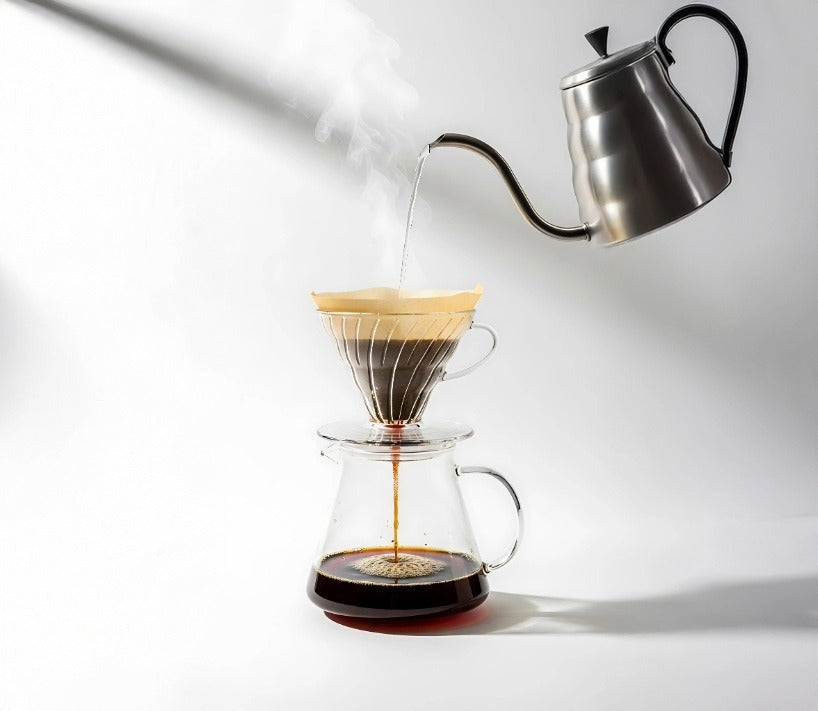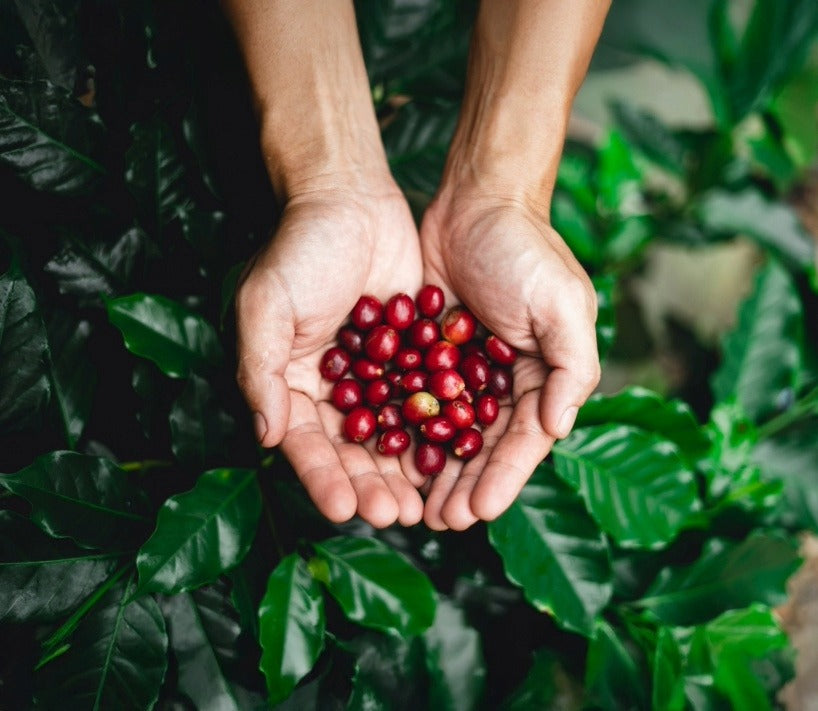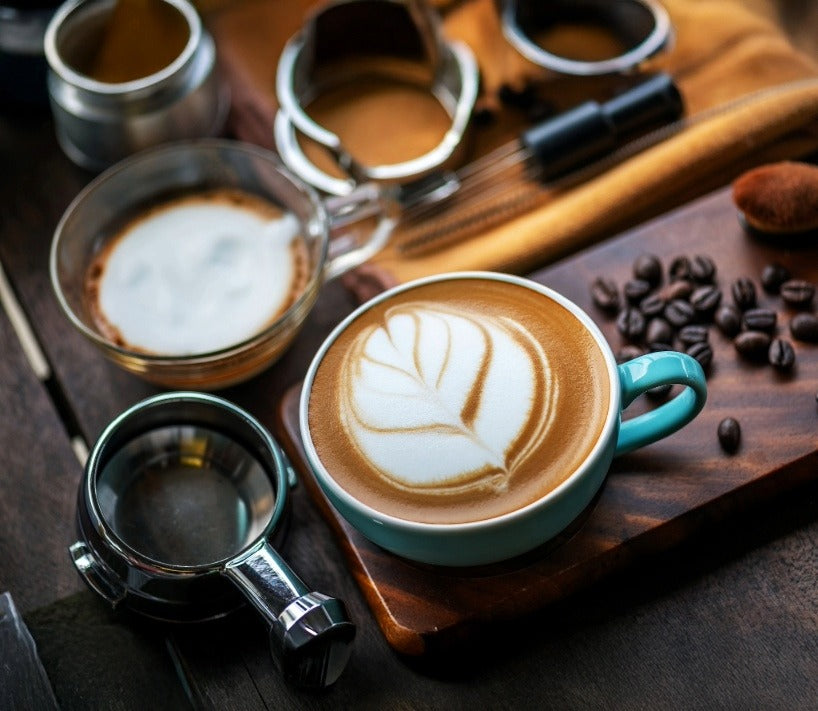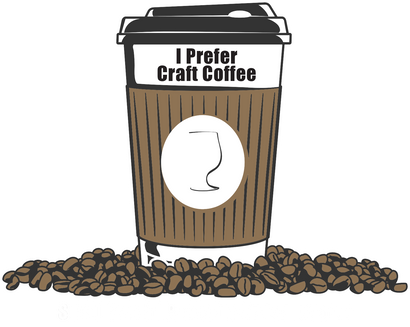Best Water To Brew Coffee at Home
September 11, 2025 5 min read
How Does Water Influence Brewing Coffee at Home?
Best Water To Brew Coffee at Home:
My coffee used to taste like “meh.” Same beans, same brewer, same method… different day, same letdown. Then I learned the thing no one talks about enough: How Does Water Influence Brewing Coffee at Home? Short answer—more than almost anything else.
Here’s my promise: give me one week and a few water tweaks, and your cup will get brighter, sweeter, and way more consistent. No fancy lab gear. No chemistry degree. Just simple steps and a tiny bit of attention.
The truth: I used “whatever water” for years. Tap that tasted like a swimming pool. Bottled water that was too flat. I blamed grinders, ratios, even the moon. Turns out, the fix was right in my glass.
How Does Water Influence Brewing Coffee at Home? The short answer
Coffee is ~98% water. Water is the “flavor taxi.”
-
Balanced minerals = sweet, clear flavor.
-
Too hard (mineral-heavy) = chalky, bitter, and scale in your gear.
-
Too soft or distilled = sour, thin, or flat because nothing grabs flavor.
-
Neutral-ish pH (~7) = stable extraction and smoother taste.
You don’t need to chase perfect numbers. You just need good water—clean, neutral-tasting, with moderate minerals.
Better Water = Better Coffee
The simple water game plan
-
Taste test (30 seconds): If your water smells or tastes weird on its own, it will make weird coffee.
-
Pick a source:
-
Filtered tap (carbon filter pitcher) or quality spring water are easy wins.
-
Avoid unfiltered very hard tap (leaves white crust in kettles) and distilled/RO straight (too empty).
-
-
Aim for “moderate minerals”: You don’t need exact numbers; think “not too chalky, not too empty.”
-
Keep pH near neutral: No need to measure—if water tastes clean, not sharp or slippery, you’re close.
-
Protect your gear: Hard water builds scale. Descale your kettle and brewer when you see white crust.
What counts as “good” water (without getting nerdy)
-
Minerals help the water hold flavor. Too many = bitter/muddy. Too few = sour/thin.
-
pH close to 7 helps you hit sweetness instead of harshness.
-
Consistency is the secret. Pick one good source and stick to it for repeatable results.
Brew numbers that just work
-
Grind fresh right before brewing (huge impact).
-
Ratio: Start at 1:16 (1 gram coffee to 16 grams water).
-
Water temp: 195–205°F (about 90–96°C).
-
Brew time goals:
-
Pour-over: 2:45–3:30
-
Automatic drip: 5–7 minutes
-
AeroPress: 1:00–2:00 (plus gentle press)
-
Espresso: 25–35 seconds (advanced, but water still matters)
-
Tiny change, big win: If a cup tastes bitter/chalky, your water is likely too hard or your grind is too fine. If it’s sour/thin, your water might be too soft or your grind too coarse.
Gear that helps (and stays simple)
-
Filter pitcher for chlorine/odor removal.
-
Reliable kettle to hit a steady 200°F.
-
An easy daily brewer: The Fellow Aiden Brewer is a smooth upgrade for an “easy pour-over” style every morning without fuss.
Comparison Table — How Water Type Changes Your Cup
| Water Type | Typical Minerals | Taste Outcome | Scale/Clog Risk | Brew Advice |
|---|---|---|---|---|
| Hard water | High (lots of calcium/magnesium) | Big body but can be bitter/muddy; flavors blur | High | Use a filter or mix 50/50 with cleaner water; descale often |
| Soft water | Low (very few minerals) | Sour/thin, weak sweetness | Low | Add some mineral content (blend with spring or filtered tap) |
| pH neutral | Moderate, pH ~7 | Balanced, sweet, clear | Medium | Ideal for most brews; keep it consistent |
| Distilled/RO | Almost none | Flat and hollow; can taste “empty” | None | Add minerals (blend with spring or remineralize) before brewing |
If you see white crust in your kettle, that’s scale from hard water. Your taste and your equipment will thank you for fixing it.
Freshness, Buying, and Specialty Coffee Guidance
You can nail water and still miss the magic if your beans aren’t fresh.
-
Roast date > “Best-by” date. You want a roast date on the bag. Beans are at their happiest from a couple of days after roast through a few weeks, depending on storage.
-
Storage: Keep beans airtight, cool, and dark. Don’t freeze-and-thaw daily.
-
Grind right before you brew. This one change plus better water equals best craft coffee at home vibes fast.
Single-origin vs blends:
-
Single-origin = unique flavors (fruit, florals, spice).
-
Blends = balance and reliability for daily cups.
Both shine when your water is right.
Order online like a pro:
-
Look for fresh-roasted options and clear roast dates when you order coffee online.
-
For steady freshness without thinking, consider a curated plan that fits your taste and routine.
Explore more and keep it easy:
Expert tip: Grinding fresh right before brewing + neutral-tasting water usually beats fancy gear with bad water. If you love convenience, the Fellow Aiden Brewer makes a clean, repeatable, pour-over style cup every morning.
A water-first brew plan (copy this)
-
Choose a consistent water source (filtered or quality spring).
-
Dose: 22 g coffee → 352 g water (that’s 1:16; scale up/down as needed).
-
Heat water to 200°F.
-
Grind medium for pour-over/drip (like sand).
-
Bloom 30–45 seconds with a little water, then pour steadily to your target.
-
Taste. If bitter/dry → slightly coarser grind or less-hard water. If sour/thin → slightly finer grind or add mineral content.
Quick Tips:
-
Finding the best coffee bean delivery for your taste keeps your routine on autopilot.
-
If you prefer curated picks, you’ll always have the freshest craft coffee online ready for brew day.
-
If you ask where to buy whole bean coffee, start with fresh-roasted options you can dial in at home.
-
Love a custom taste? Ask about custom coffee beans based on what you enjoy most.
-
Free shipping promos are cool, just make sure the coffee isn't old.
Want a No-Guesswork Setup?
Check the Curated Better Morning Coffee at Home Program for guided picks matched to your brew style and water setup, so your cups stay bright and sweet all week.
You Quick Coffee at Home FAQs
Q1. How Does Water Influence Brewing Coffee at Home?
Water carries flavor from coffee into your cup. With balanced minerals and neutral taste, you get sweeter, clearer coffee. Too hard = bitter/flat. Too soft = sour/thin.
Q2. Is hard water bad for brewing coffee?
Hard water can mute flavors, push bitterness, and leave scale in your kettle. Filter it or mix it with cleaner water for a smoother cup.
Q3. Can I use distilled or RO water?
Not by itself. It’s too empty. Add minerals (or blend with spring/filtered water) so your coffee extracts properly.
Q4. What’s the easiest fix if my coffee tastes off?
Try better water first, then adjust grind. Bitter/chalky? Soften the water or grind coarser. Sour/thin? Add minerals or grind finer.
Q5. Do I need to measure TDS and pH?
No. If water tastes clean and neutral to you, that’s enough. Keep the source consistent and you’ll get repeatable results.
PS - Your Extra Win
Want a no-guesswork delivery plan and an easy water + grind checklist? Grab my free guide here:
Deliver Morning Magic: Best Coffee Bean Delivery 2025 — Fresh Roasted, Fast Shipping
Also in Best Coffee To Buy Online Education

Biggest Mistake With Pourover Coffee: It's Your Beans
January 02, 2026 3 min read
Learn how to brew the best pourover coffee at home with the best tasting craft coffee online. Remember, the best coffee to drink at home starts with the freshest craft coffee online, not the bargain bin beans at your local supermarket.

Specialty Roast Coffee Beans Online: What’s the Deal, Really?
January 01, 2026 4 min read
You'll learn what specialty roast coffee beans online actually means, and why it translates to the best tasting craft coffee at home.

High-Score Coffee Beans Online: Why 85+ Points Actually Matter
December 31, 2025 3 min read
Learn why the best tasting craft coffee online is high-scoring specialty coffee that tastes better and how to choose the right beans online. Order coffee online from a roaster you trust.
